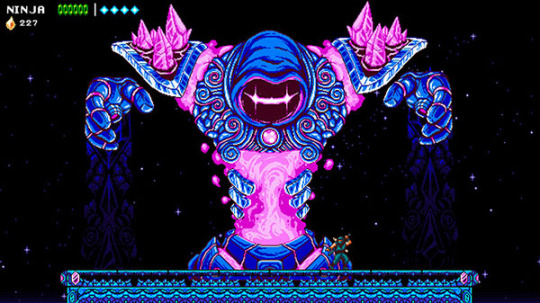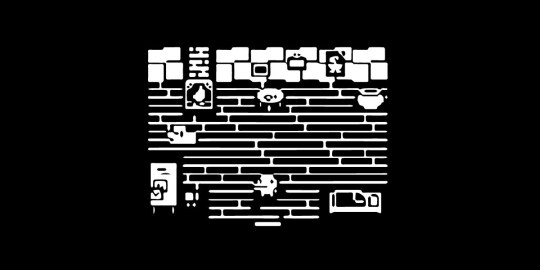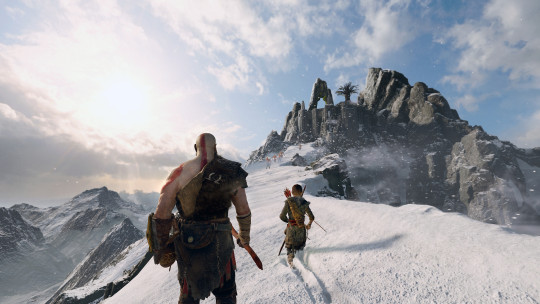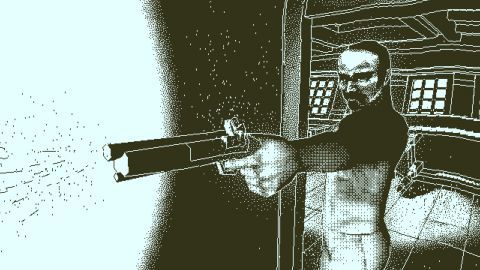#i did take some huge inspiration from monster hunter world I must admit
Explore tagged Tumblr posts
Text

Ok have a first look at my idea for the division of the depth into different biomes. I've separated it into seven different biomes called:
Crystal Maze, the biome below the Hebra Region, is filled with crystals and gems of all kinds. They've grown huge. Some are sharp, some are soft and some act like mirrors. Structure | Flora | Fauna
Inside Death Mountain, the biome below the Eldin Region, is burning hot and dangerous. Magma is everywhere and from time to time there'll fall flaming rocks from above due to eruptions. Structure | Flora | Fauna
Forgotten Kingdom, the biome below the border of the Gerudo Highlands and the Hebra Region, is filled with a lot of buildings and machines that might have belonged to the Zonai once. This biome got occupied by the Yiga as it lays right below their Hideout and is of great use for them because of all the Zonai Devices. Structure | Flora | Fauna
Ancient Jungle, the biome below the Lanayru Region, is incredibly humid and filled with all different kinds of plants and fruits that have never been seen before. Structure | Flora | Fauna
Coral Lowlands, the biome below the Gerudo Desert, is covered in a huge variety of beautiful and colorful corals, which have grown unnaturally large. Structure | Flora | Fauna
Wild Prairie, the biome below the Hyrule Fields, is just like in the game. A simple field with a few trees, grass and ponds here and there. Not much to see here. Structure | Flora | Fauna
Rotton Hollow, the biome below the Faron Region, is said to be the destination monsters seek when they are about to die, thus this biome is littered with bones and decaying corpses of ancient monsters and beings. The air here is rather toxic due to the gas that's released by the decaying corpses. Structure | Flora | Fauna
Every biome has exactly one Lightroot that acts the same way as the Skyview Towers on the Surface. Every Lightroot has a boss which is protecting it from intruders (I'll make a separate post for the bosses). The Lightroots don't share the same location with any Shrines or Skyview Towers, I've picked those randomly. I've decided to get rid of the original 120 ones because it's ridiculous and stupid that they're connected to all the Shrines on the Surface. I'll probably have to brainstorm a bit more here to make the Lightroots make more sense.
Every biome also has its own unique fauna! You'll never see the same monster in another biome (maybe with exceptions). Some are new and some are inspired from monsters of older games.
This is only a rough layout. I'll go into deeper detail when I'm writing about the specific biomes, but that's gonna take some more time of preparation.
#dragon's stupid thoughts#dragons depth redesign#totk#i did take some huge inspiration from monster hunter world I must admit#but i think it works out#the phirone region is so rich in flora thanks to all the nutrients it can take from below#[ETA: Faron not Phirone. still trying to remember the correct english terms]#all the water from the Lanayru Region seeps through the ground all down to the depth which created a fascinating exotic jungle#mmm should I work on the specific biomes or on refs for the monsters next?
5 notes
·
View notes
Link
As Always: text is provided only in the event of access expiration or post deletions from the hosting site. Whenever possible, always read the article at the link.
Note: I've been debating setting up a web store where I sell Folklore Correct Vampire Hunting Kits, but I'm already busy enough. My plate is full. I don’t need goths and former twilight fans emailing me that I’m an “idiot” for not including this, that or the other thing.
I did put one together over a weekend just to illustrate the differences between Hollywood inspired kits and the folk tales. Like... I can tell the maker of the kit was a fan of Bram Stoker-ish vampires or if they preferred Hammer Horror. And neither fandom would do much to actually “kill” a vampire. PS: no. Gwyneth Paltrow’s Vampire Repellent wont do shit except suck all the money from your bank account.
https://www.mirror.co.uk/news/uk-news/silver-bullets-killing-kits-very-13940409
Silver bullets, killing kits and the very weird history of vampires Creepy cases packed full of vampire-killing instruments are selling for tens of thousands of pounds
ByMatt Roper 13:16, 6 FEB 2019
A vampire killing kit might not seem like the most obvious item for your gift wish list but it's the latest must-have possession.
It has been claimed the cases of creepy instruments were once used by real life Dracula hunters.
And they don’t come cheap - ‘authentic’ kits dating back to the 17th century can sell for tens of thousands of pounds.
Most of the antique cases include wooden stakes and a mallet - to strike vampires through the heart - as well as a crucifix, rosary and prayer book, and a pistol with silver bullets.
Other items include garlic powder, holy water and vials containing anti-vampire serums.
But while, with a recent new vampire fever taking hold, the kits are experiencing a modern-day renaissance, doubts have been raised about whether they ever existed at all.
Even the Royal Armouries Museum in Leeds recently admitted the vampire killing kit it's had on display since 2012 might not be authentic.
The museum's Keeper of Firearms, Jonathan Ferguson, wrote that after researching vampire slaying “it became clear that kits like our one could not have existed until the era of ‘Hammer’ horror films in the 1950s-70s”.
But he said it still had value as “an invented artefact that reflects our cultural obsession with the vampire.”
Another museum, however, insists their vampire killing kits are 100 per cent genuine.
Ripley’s Believe It or Not! museum claims it owns the world’s largest collection of the kits, of which no two are alike.
The kits contain everything the vampire hunter needs
It claims that, while vampires were described in tales and folklore for thousands of years during the 17th century people were so scared of them that they often took extreme precautions.
A graveyard in Poland, for example, was discovered to have people shackled at the neck.
Then, as Bram Stoker’s Dracula swept Victorian England, vampire fears finally made it out of Europe and travellers toured the hills of Transylvania with grave caution.
The museum’s 30 vampire killing kits include stakes, guns and equipment for making silver bullets.
No two kits at Ripley's are the same
There are also vials of liquid including “Professor Blomberg’s New Serum’, a Victorian sulphuric acid stomach tonic called Elixir of Vitriol, and one simply labelled ‘vampirism’.
Ripley’s, which has museums around the world, claims it has managed to authenticate the age of some of the components, including the firearms.
It says: “Were they sold to witlessly terrified travellers in the forests of Transylvania?
"Were they assembled later by mysterious individuals for purposes unknown? Either way, these kits are real.”
Historians agree, however, that for centuries there was a genuine fear of vampires throughout Europe.
'Vampire' skeleton that was speared after death uncovered in Yorkshire burial site
Often, these legends arose from a misunderstanding of how corpses decompose.
People mistook longer-looking teeth and fingernails for bodies turning into monsters, while the dark “purge fluid” that can leak out of a corpse was seen as evidence it had been drinking blood from the living.
Many blamed vampires for outbreaks of diseases like the plague, and the business of killing them, or preventing the dead from feeding on the living, was deadly serious.
Historical accounts emphasised the need for particular methods and tools, such as stakes to destroy the heart - one of the only ways to permanently kill a vampire - and the use of holy water or garlic to ward off the dead.
In a 1979 tract entitled ‘On The Chewing Dead’ a Protestant theologian wrote that people could stop the dead from leaving the grave and eating people by stuffing soil or a stone into the dead person’s mouth.
Without the ability to chew, the tract claimed, the corpse would die of starvation.
In 2006 archaeologists found evidence of this tactic when they unearthed a 16th-century skull in Venice, Italy, that had been buried among plague victims with a brick in its mouth.
Tales of vampires continued to flourish right up to the end of the 19th century, despite a declaration by Pope Benedict XIV that vampires were “fallacious fictions of human fantasy”.
Many of the cases contained cricifixes and firearms
They were also filled with strange vials filled with potions designed to kill a vampire
In 1892, when neighbours of Mercy Brown, a 19-year-old from Rhode Island who had died of tuberculosis, opened up her grave and found blood in her mouth, they took it to be a sign of vampirism.
Believing she was harming her brother, Edwin, who was sick, they burned Mercy’s heart and mixed the ashes into a potion for him to drink - a common anti-vampire tactic.
The potion was meant to heal him but he died a few months later.
By the 20th century belief in vampires subsided, but the monsters were revived in books, films, and more recently, hugely popular TV series.
And it was during the latest period of fascination with the vampire legend that the first anti-vampire kit emerged, in 1986, when one was put up for sale in the US.
The kit contained a percussion pocket pistol with accessories, a combined cross and stake in wood and ivory, and two silver bullets, and was sold as a genuine 19th century artefact.
In the years that followed other kits began to come to light, and values began to climb as the big auction houses got involved, with some fetching tens of thousands of pounds.
While some claimed they were genuine, made to sell to vampire-fearing western travellers to Transylvania, others insisted that vampire killing kits never existed at all.
In 2004, Sotheby's sold a kit attributed to German Ernst Blomberg and Belgium gunmaker Nicholas Plomdeur for nearly £25,000.
Although the auction house cautioned that "neither the existence of the gunmaker Plomdeur nor that of the gunmaker Plomdeur can be confirmed.
"Also open to question is whether these kits were ever employed successfully in the killing of vampires."
Genuine articles once used to stake the hearts of suspected vampires, or expensive novelties still fooling buyers today? One thing is sure, vampires are still dividing opinions and fomenting beliefs even today.
3 notes
·
View notes
Text
Video Game Year in Review: Honorable Mentions
When I compiled the list of games I played this year that didn’t make it to my top 10, and weren’t remasters, remakes, or re-releases (see previous list), the number came out to just over 10, with the few over the 10 spot either just not being particularly remarkable (Splatoon 2: Octo Expansion) or games that I put so little actual time into that I really didn’t get the chance to form coherent thoughts about them (Prey: Mooncrash and BattleTech, both examples of types of games I want to resolve to not be so afraid of playing in 2019).
So the remaining 10 that I did want to mention are an interesting bunch. Not all of them are games that I loved. A decent amount of them are games I had serious issues with. But they all had something to them, something that made those issues that I had all the more frustrating, because it prevented me from dismissing them outright. My feelings about these games are varied enough that I wanted to rank them, so I suppose this list could just be called “Reese’s Top 20 games of 2018: 20-11,” or, “The Problem Children,” or something, but “Honorable Mentions” works fine for me.

10. The Messenger - Though I have never played Ninja Gaiden, and therefore don’t really have any nostalgia for the type of game this dual-8-bit/16-bit/action-platformer/Metroidvania was clearly going for, the early parts were executed pretty damn well. Tight controls, great music, some very fun and memorable boss fights, gameplay that was challenging but not, I imagine, anywhere near as rage-inducingly challenging as the games it was based on. Those initial four or five hours or so felt enjoyable and complete enough that the fact that I fell off pretty soon after the game pulls a very significant aesthetic and gameplay shakeup not enough to make me hate the game. As cool as a concept as it is to literally jump back and forth between different eras of game design, the “Metroidvania” part of this game was filled with the shit that tends to frustrate me about that style of game - aimless wandering and tedious backtracking. A very interesting experiment that, for me, didn’t quite pay off, but the effort produced a pretty unique game.

9. Iconoclasts - As far as its gameplay goes, this game is almost the inverse of The Messenger’s brand of Metroidvania, highlighting all the things that I actually can love about the genre. Sure there’s backtracking, but the layout of the levels is thoughtful and inspired enough that it rarely feels tedious: I often found myself very excited to gain my new ability and revisit a previous area because - just like the best Metroid games - I know exactly where I can use it, have been wondering about it for a while, and can finally see what’s on the other side. What ended up bogging down the experience of this game for me was the surprising emphasis on story and long-winded dialogue scenes. While I definitely really liked a handful of characters, the game’s increasing willingness throughout its run-time to put verbose speeches in all of their mouths wore a bit thin, given how thoroughly okay the general plot was. Still, game has some of the absolute most gorgeous pixel animation I’ve ever seen.

8. Monster Hunter World - As it seemed to be for many, the streamlined (though still irritatingly idiosyncratic) systems management, lush world and creature design, and conveniently slow part of the year that it released all made this the first Monster Hunter game I was willing to fully commit to. For a while, the game really won me over - experimenting with weapons was deeply satisfying, and the care and evocative detail in the designs felt inspired and compelling. I even played a bit of multiplayer with friends, and had a lot of fun with it, despite how generally committed I tend to be to single player experiences. After a while, though, I stopped being wowed by the animations and controls to start to be bothered by how careless the game seemed to be about its colonial fantasy, what a generally destructive force you and your team are on this beautiful world. It’s not as though this isn’t something that was obvious from the beginning, it’s just that for a while there, I figured it must actually be going somewhere with it, that there must be some commentary it was building toward. What I was met with was disappointing silence, and LOTS of grinding.

7. Red Dead Redemption 2 - I felt a lot of ways about this game, some of which I managed to capture in the review I wrote a couple months ago. There’s so much about this game that I hold against it and Rockstar, both surrounding it (the abusive culture of crunch in its development, their lack of care in getting an indigenous and/or black actor to play Charles) and within the game itself (the stretching of a decent story to an absurd length, controls so clunky they often broke the role-playing the rest of the game was so good at encouraging). But the things that I loved about this game - the stunningly atmospheric world, the complicated and nuanced character dynamics in the camp, the ways in which it allows one to experience and engage with its details - all stuck with me as well. This game represents so much of both what I want games to be going forward and what I never want them to be again.

6. Minit - Weird as it sounds, as much as I liked this game, my main gripe with it was the primary mechanic around which it was based. I loved the minimalist black-and-white art style: the way the white lines shined on my HDR TV is an excellent example of how “simple” graphical styles can take advantage of modern technology as well as any graphically demanding powerhouse. The world was a joy to explore, a miniature Zelda with a unique sense of humor. I honestly just never got why I was only allowed to enjoy it a minute at a time. The game seemed to do little to justify its central hook, and most of the time it ended up feeling more like a hindrance than a meaningful game changer. Nevertheless, Minit gave me a short, sweet experience that stuck with me more than I expected it to.

5. God of War - Having never really liked the previous games in this series, I went into this one with fairly low expectations, despite the near-universal praise it was getting. The story really didn’t do much for me. The father/son dynamic was fine, but hardly the innovative step forward in video game narratives many seemed to claim it was. Kratos is still an inherently ridiculous character, no matter how much depth they try to give him in this game, though I did thoroughly enjoy Christopher Judge’s performance. The real hook of this game, outside of its very pretty visuals, is its really just superb combat. They nearly entirely did away with the hacking and slashing of the previous games, and created a deliberate, thrilling system of combat juggling. There are a decent amount of moves at your disposal, but it never feels like an overwhelming amount, and the balancing act you can achieve in utilizing all of them properly results in just some of the most satisfying combat I’ve ever experienced in a game.

4. All Our Asias - This was the first of several lo-fi 3D polygonal games I played this year - the others will show up in my top 10 - and I’m just so excited about the coming wave of game developers inspired by 90’s PS1-era aesthetics, an era I’m personally much more nostalgic for than the still-prevailing 16-bit pixel art of many indie games. This is probably also the weirdest of that style of game that I played this year (and given what one of the others is, that’s saying something), an essay in video game format, an exploration of the bizarre nature of memory, told through abstract shapes and landscapes. Creator Sean Han Tani tells a wonderfully personal story here about racial identity and complicated family relationships, by navigating the conceptual framework of your player character’s father. It’s a singular experience that I still think about often, nearly a year after playing it.

3. Mario + Rabbids: Kingdom Battle - Donkey Kong Adventure - I’ll admit that my time with Mario + Rabbids: Kingdom Battle last year was my first real dip into tactics gaming, an experience that allowed me to gingerly step my foot into some deeper water this year (some of which I discovered was still too deep for me, like BattleTech). But for as easy as the first half of that game was, I maintain that the back half was surprisingly challenging. This year’s DLC, Donkey Kong Adventure, is not challenging. Donkey Kong is so overpowered it feels like it must have been a mistake, and the way that he can combine attacks with other characters is just ridiculous. But, weirdly enough, that’s part of what I enjoyed about this addition, a fairly breezy few-hour adventure where the most fun comes from seeing just how badly you can fuck some Rabbids up in a single move. Having Donkey Kong grab an enemy, throw him at another enemy, hit both plus a nearby enemy his banana boomerang, then having Rabbid Cranky charge into all three of them and blast them with his shotgun-esque Boombow never really gets old, at least for the well paced 8 or 9 hours that the game lasts.

2. Dead Cells - An endless, side-scrolling action platformer with tight-as-hell, ultra satisfying combat, beautiful art design, AND it was made by team of French socialists with no bosses who all get paid the same? I mean, fuck yeah. Dead Cells, a game that I originally played a bit in Early Access last year, and enjoyed so much that I decided to wait until the official release before truly delving into it, is a game that largely plays like the dream it sounds like on paper. I’m not sure if I’ve ever played at 2D game with combat as good. Generally, I’m not huge on run-based games, and did hit some walls in this game where I just felt like my own ineptitude was getting in the way of my enjoyment, and the game wasn’t giving me much between runs to make me feel like I was actually making any progress. I still haven’t actually beat it, but it’s become my default palate cleanser game that I play a few rounds of in between other games or while listening to podcasts or music, so I’m still plucking away at it. I’ll get there someday.

1. Return of the Obra Dinn - I enjoyed this game so, so much, even if sometimes more on a theoretical level than a practical one. The style is impeccable - I really will never get tired of the brief tease of opaque, incidental dialogue or sound, followed by the sudden explorable tableau of death(s), soundtracked by haunting strings. The gameplay is inspired - I’ve had few gaming experiences in recent memory as fulfilling as any time the little music que popped up after I solved a death, confirming that I had gotten three deductions correct. I have to admit, though, that those moments were spread further out than I would have wished. Part of this is just happenstance - I didn’t realize until quite a few hours into this game that by zooming in on someone, you’ll match them to their picture, something that would have undoubtedly saved me a lot of frustrating time in which I was grappling with trying to figure out whose fuzzy faces were whose. Nevertheless, I felt like I was too often given too little information, and had to take guesses between one of a few possible suspects, many of which were informed by racial assumptions that made me actively uncomfortable. This was, no doubt, part of the point, so it’s hard for me to hold it against the game, but it regardless did lead to a pretty exasperated final couple hours of play. Despite these complaints, its hard for me to think of this game as anything other than a wildly successful achievement - innovative, inspired, both intelligently designed and remarkably trusting in its player’s intelligence. Maybe a little too trusting, in my case.
#Return of the Obra Dinn#Dead Cells#Mario + Rabbids Kingdom Battle Donkey Kong Adventure#All Our Asias#God of War#minit#Red Dead Redemption 2#Monster Hunter World#Iconoclasts#The Messenger#video games#games#review#gameoftheyear#podcast#criticism
1 note
·
View note